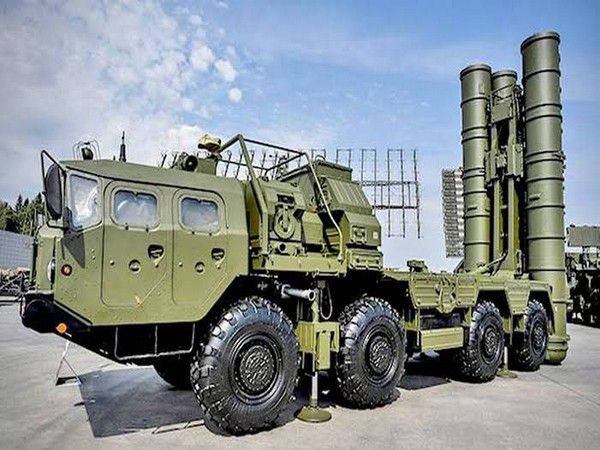
New Deli: In the wake of India’s decisive and precision-driven Operation Sindoor, which targeted terrorist infrastructure across multiple locations in Pakistan and Pakistan-administered Kashmir (PoK), the country has witnessed an unprecedented onslaught of retaliatory drone and missile attacks from across the border.
Yet, amid this heightened threat environment, India’s robust and resilient air defence system has emerged not only as a technological triumph but also as a critical guardian of national security and civilian life.
Over the past few days, India’s defence infrastructure has demonstrated remarkable capability and efficiency in neutralising hostile threats.
From hostile drones attempting to breach the Line of Control (LoC) to guided missiles aimed at sensitive installations, India’s integrated air defence network has stood as an unshakeable wall.
The ability to intercept and destroy incoming aerial threats with speed and precision has ensured that not a single major Indian city or military asset has suffered damage — a feat that has drawn both domestic admiration and international recognition.
A modern multi-layered shield
India’s air defence system is not a single mechanism but a complex, multi-tiered architecture consisting of radar networks, anti-aircraft weapons, interceptor missiles, surveillance drones, and command-and-control systems.
This layered approach allows the country to detect, track, and eliminate threats at various altitudes and distances.
At the heart of this system is the S-400 Triumf surface-to-air missile system, acquired from Russia, which has significantly enhanced India’s ability to neutralise long-range missile threats.
Capable of intercepting targets at distances of up to 400 kilometres, the S-400 has served as a strategic deterrent and a first line of defence against medium and long-range missiles.
Complementing this are indigenous systems like the Akash missile system, designed to target aircraft and drones at medium range, and the Barak-8, jointly developed with Israel, which has shown exceptional performance in neutralising incoming threats with high accuracy.
These platforms are seamlessly integrated through the Integrated Air Command and Control System (IACCS), which ensures real-time coordination between the Army, Air Force, and Navy.
Real-time surveillance and rapid response
A defining feature of India’s air defence architecture is its emphasis on real-time surveillance and swift response mechanisms.
Advanced radar systems, such as the Swathi Weapon Locating Radar and the Israeli EL/M-2084 Multi-Mission Radar, have played an instrumental role in detecting and identifying enemy projectiles within seconds of launch.
Moreover, India’s use of artificial intelligence (AI)-enabled drone technology for reconnaissance and battlefield awareness has added another layer of security.
These drones operate along the border regions, continuously scanning for abnormal activity and feeding crucial data back to command centres.
Over the past few days, they have helped in locating and eliminating several incoming threats even before they breached Indian airspace.
The synergy between surveillance assets, decision-makers, and defensive systems has ensured that India is always one step ahead of adversaries.
This speed and coordination were amply visible during recent Pakistani attempts to target military depots in Punjab and Rajasthan, which were successfully thwarted without a single casualty.
Civil-military coordination and public safety
Perhaps the most commendable aspect of India's air defence performance is its ability to ensure zero disruption to civilian life despite a high-alert environment.
Cities like Amritsar, Jammu, and Srinagar — closer to the frontlines — continue to operate normally, thanks to well-rehearsed contingency protocols and civil-military coordination.
The National Disaster Management Authority (NDMA) and local authorities have worked hand-in-hand with the armed forces to ensure that citizens remain informed, calm, and protected.
Early warning systems, public communication networks, and emergency response drills have all contributed to an atmosphere of preparedness without panic.
This seamless civilian-military collaboration reflects the maturity of India’s defence preparedness and the trust citizens place in their armed forces.
Boosting morale, ensuring sovereignty
India’s air defence system has not just been about intercepting drones and missiles; it has also played a critical role in safeguarding national morale and asserting sovereignty.
In times of heightened conflict, the ability to protect one's territory without disrupting civilian life or military operations is a sign of a truly evolved state.
Operation Sindoor, while bold in its strategic intent, was backed by an assurance that India would not be caught off guard.
That confidence was well-placed. The success of India’s air defence grid in recent weeks has reinforced the country’s position as a regional superpower capable of defending its borders without escalating conflict.
Furthermore, this success sends a clear message to hostile actors: India possesses both the will to act decisively and the capability to defend comprehensively. This dual posture of strength and stability enhances India's diplomatic standing and solidifies its reputation on the world stage.
A future-ready force
With continuous investments in indigenous defence production and public-private collaboration under initiatives like Atmanirbhar Bharat, India’s air defence future looks even more promising.
Projects like the Ballistic Missile Defence (BMD) Phase-II, which aims to provide a shield against intercontinental ballistic missiles (ICBMs), and the development of Directed Energy Weapons (DEWs) and hypersonic interceptors, are already in advanced stages.
India is not just defending — it is innovating, adapting, and evolving.
India’s solid air defence system, tested and proven in real-time under the shadow of conflict, stands as a pillar of national strength and strategic clarity.
It has preserved peace within borders, protected civilian life, and allowed the country to pursue its strategic objectives with confidence and precision.
As the dust settles from Operation Sindoor and regional dynamics shift, one thing remains clear: India’s skies are secure — guarded by a defence system as resolute as the spirit of the nation itself.